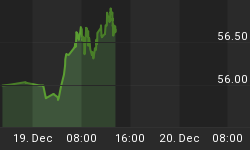As per Merriam-Webster, the definition of a conundrum is:
1: a riddle whose answer is or involves a pun;
2 a: a question or problem having only a conjectural answer, b: an intricate and difficult problem.
As the housing bubble was going into overdrive, Alan Greenspan described the low long-term interest rates as a conundrum because long-term interest rates did not rise in concert with the ongoing economic expansion. What the Federal Reserve failed to see was that long-term rates were artificially low because foreign central bankers were aggressively buying US Dollars and Treasuries.
In Congressional testimony on February 16, 2005, Alan Greenspan said:
For the moment, the broadly unanticipated behavior of world bond markets remains a conundrum. Bond price movements may be a short-term aberration, but it will be some time before we are able to better judge the forces underlying recent experience.
Not realizing the effects of foreign capital flows on long-term interest rates, the Federal Reserve, by not taking action, incentivized Americans to bid up houses and consume beyond their means with borrowed money. The Federal Reserve should have been the know-all, be-all that markets came to believe.
Today, the foreign capital flows that led to Greenspan's use of the word conundrum are disappearing. This is clear as foreign governments cut back on Treasury holdings, largely explaining the rise of long-term government interest rates. In an effort to replace the foreign capital flows that once supported long-term government bond markets, the Federal Reserve is printing money to buy long-term Treasuries. In essence, the Federal Reserve is attempting to recreate the conundrum. Ironically, when the Federal Reserve wanted higher long-term interest rates, it could not achieve its goal. Now that it needs lower long-term interest rates it is also failing.















